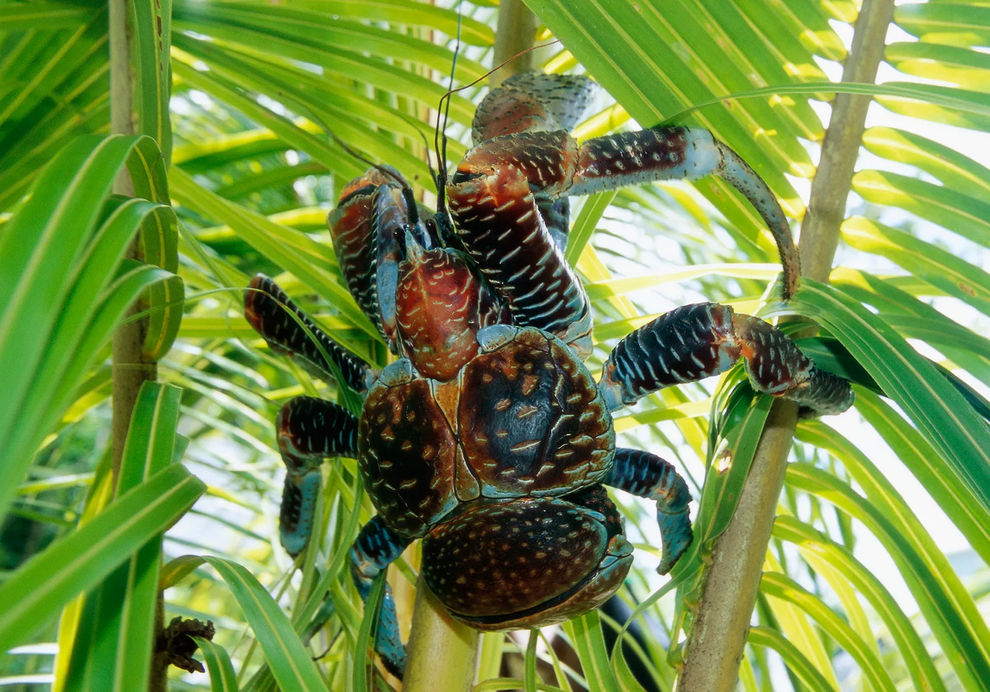In the heart of the Indian and Pacific Oceans, a colossal and formidable creature reigns supreme: the Giant Coconut Crab (Birgus latro). As the largest terrestrial arthropod in the world, this awe-inspiring crab captivates with its sheer size, incredible strength, and astonishing abilities.
Monstrous Size and Crushing Power
Living up to its name, the Giant Coconut Crab can weigh up to 4 kilograms (about 9 pounds) and reach over 1 meter (3 feet) from claw to claw. But what truly sets this titan apart is its crushing power. With claws that can exert up to 3300 newtons of force, these crabs can effortlessly crack open coconuts—the toughest nuts in the tropics. This extraordinary feat of strength allows them to feast on the rich, nutritious meat inside, showcasing nature’s remarkable ingenuity.
Mysterious Nocturnal Predators
Giant Coconut Crabs inhabit remote islands across the Indian and Pacific Oceans, from the Seychelles to Christmas Island. These nocturnal giants emerge under the cover of darkness to forage for food. With a diet that includes fruits, nuts, seeds, and even carrion, they use their keen sense of smell to locate sustenance. Their climbing prowess enables them to scale towering coconut trees, making them as agile as they are powerful.
Unsettling Encounters with Humans
While primarily feeding on natural bounty, Giant Coconut Crabs are not averse to scavenging human leftovers. There are tales of these crabs stealing shiny objects like pots, pans, and even shoes, earning them the nickname “robber crabs.” Their boldness can sometimes lead to unsettling encounters, further adding to their mystique and reputation as formidable island dwellers.
Incredible Lifecycle and Adaptation
The reproductive process of the Giant Coconut Crab is a marvel of nature. Females release their eggs into the ocean, where larvae develop before settling back on land. Juvenile crabs initially inhabit discarded shells, much like their hermit crab relatives, until they grow large enough to form their hard exoskeleton. This lifecycle underscores their unique adaptation to both marine and terrestrial environments.
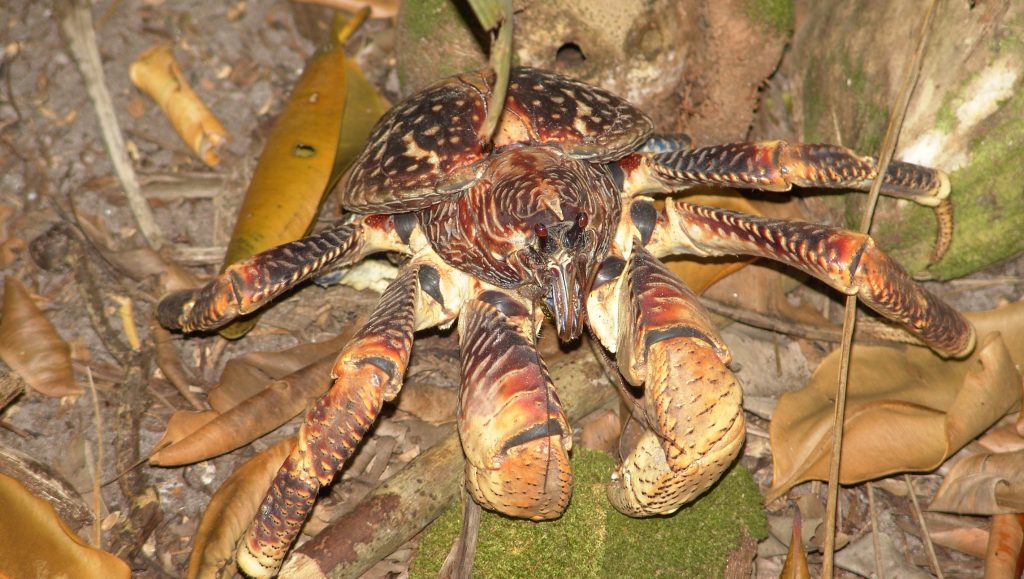

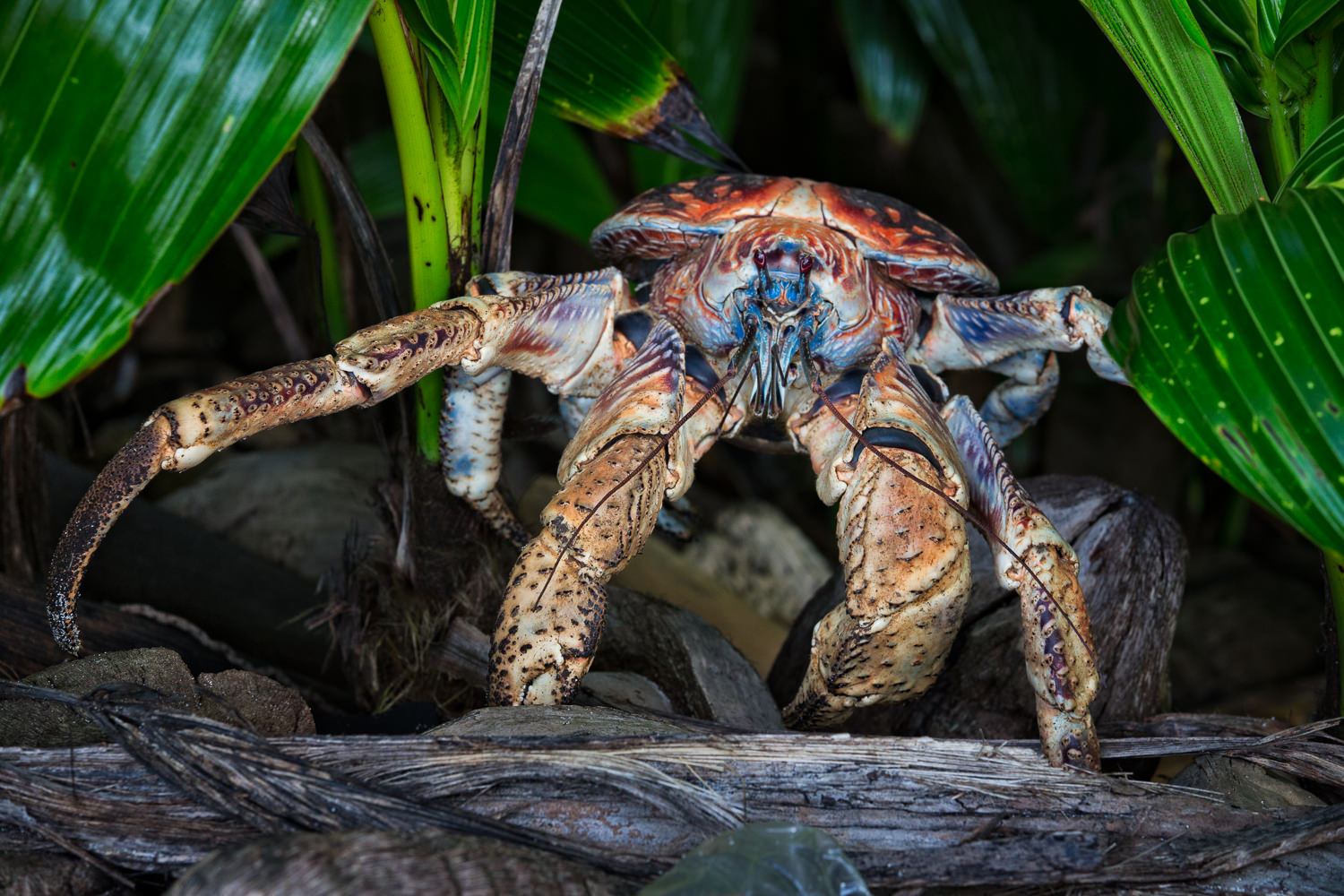
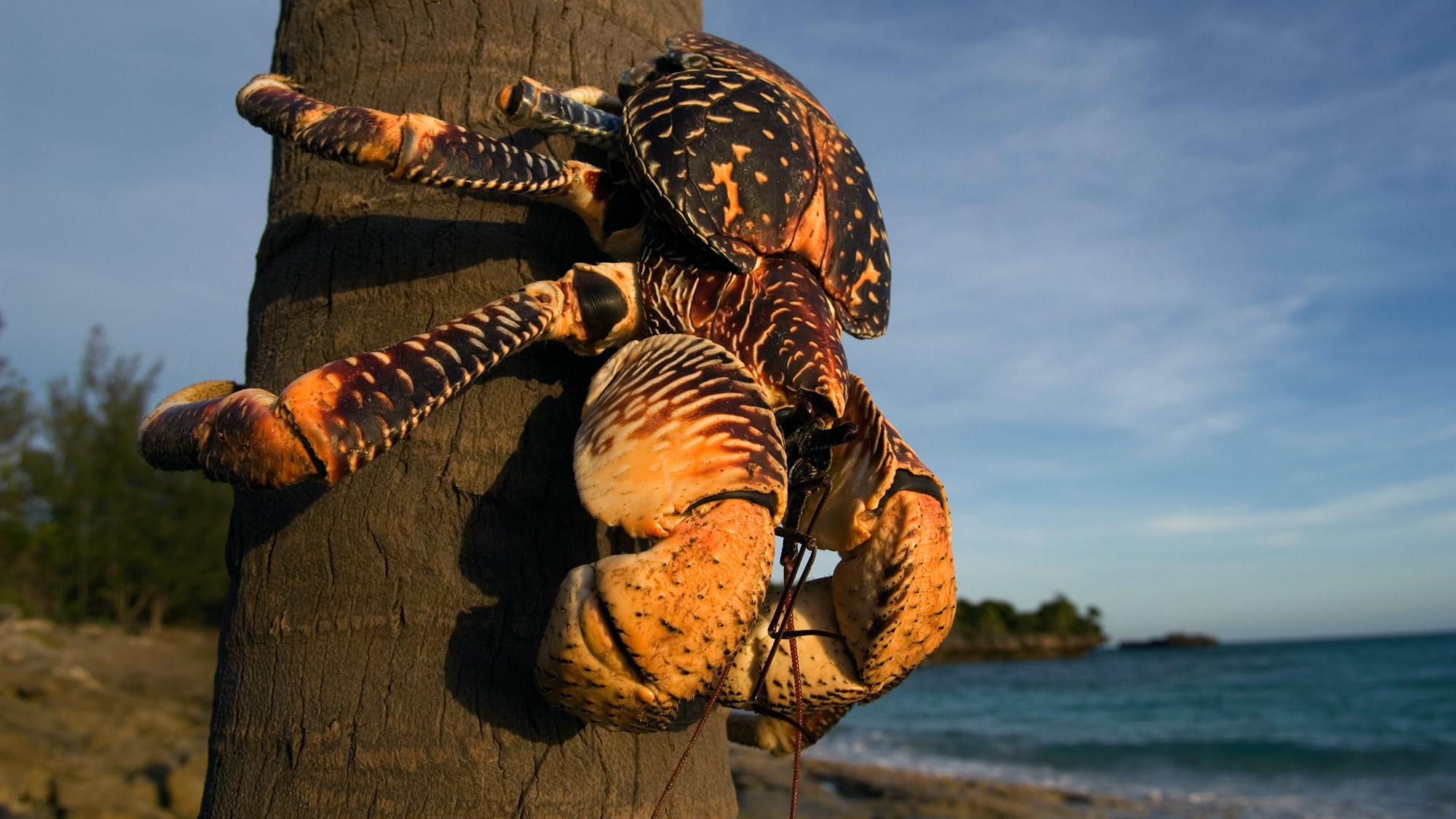



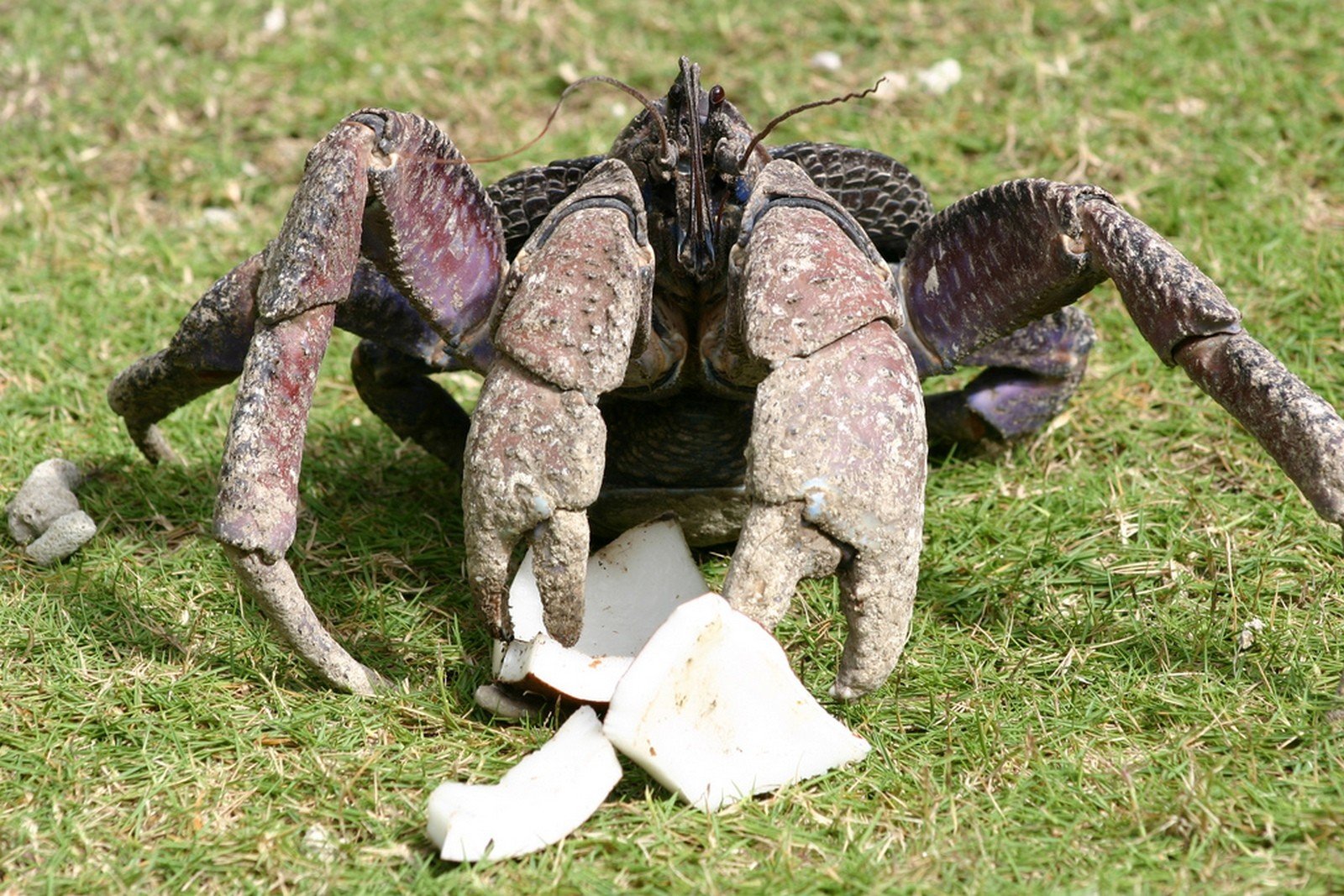
:max_bytes(150000):strip_icc()/GettyImages-1307518359-6a86f7bcb53a42e5a661831cc44550d6.jpg)
